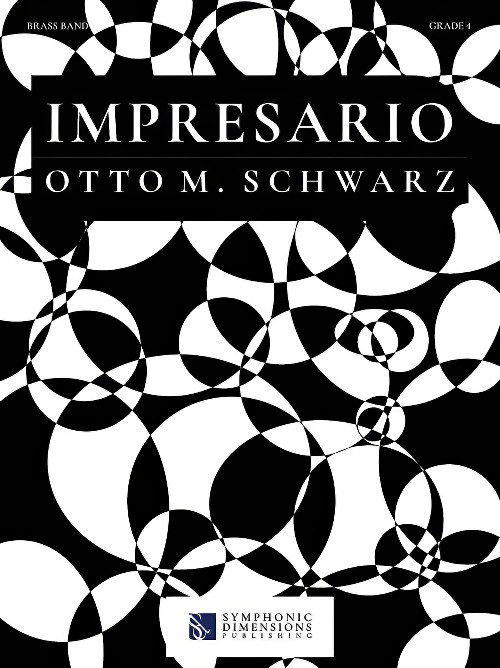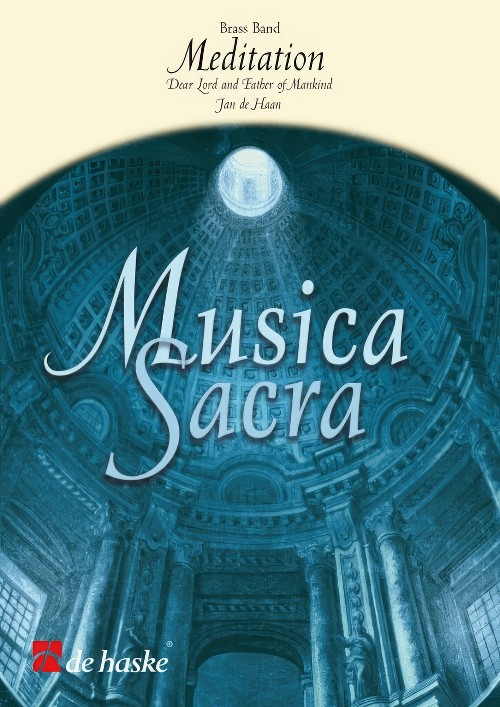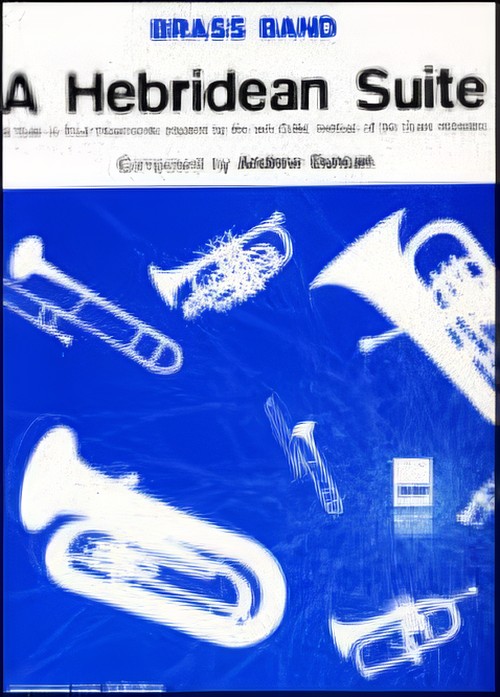Results
-
£60.99
Honneur - Bertrand Moren
This march attempts to portray the role of Honour as a quality of character using highly energetic rhythms and strong melodic lines. The opening themes, together with those developed in the first section, perfectly reflect this significant human quality. A short bridge passage consisting of a series of sonorous chords played by the higher instruments in the band is soon taken up by the lower sections. The main theme appears in the second part of this march and is a melodic duet for Eb soprano cornet and solo cornet.
Estimated dispatch 5-14 working days
-
 £69.99
£69.99Meditation - Jan de Haan
Meditation is based on Dear Lord and Father of Mankind (1887) by the English composer and organist Frederick Charles Maker (1844-1927). This is a calm, introverted work that however has an intense effect. In the first section, the solo euphonium is given an important role, leading to one of the loveliest of all English hymn melodies.
Estimated dispatch 5-14 working days
-
 £69.60
£69.60Impresario (Brass Band - Score and Parts) - Schwarz, Otto M.
Impresario is a solemn concert march by Otto M. Schwarz, equally suitable as a work to open a concert or indeed as a finale. The main theme of the first section is processed in different harmonic and rhythmic variations and finally leads to a trio with numerous technical refinements and a catchy melody. This somewhat out-of-the-ordinary concert march in Otto M. Schwarz' well-known style ends with a frenzied finale.Duration: 3.45
Estimated dispatch 7-14 working days
-
 £69.99
£69.99Meditation (Brass Band - Score and Parts) - De Haan, Jan
Meditation is based on Dear Lord and Father of Mankind (1887) by the English composer and organist Frederick Charles Maker (1844-1927). This is a calm, introverted work that however has an intense effect. In the first section, the solo euphonium is given an important role, leading to one of the loveliest of all English hymn melodies.Duration: 6:45
Estimated dispatch 7-14 working days
-
 £59.99
£59.99A Hebridean Suite (Brass Band - Score and Parts) - Duncan, Andrew
A colourful and light-hearted musical journey through the evocative Scottish islands, Andrew Duncan's A Hebridean Suite is in four concise movements: Stornaway, The Old Shepherdess and the Norse Maiden's Spirit, Mouth Music and Ceilidh-Rondo. It is suitable both as a concert suite for more advanced adult and youth bands and has also been used as a test piece in the First Section at the 2010 Butlins Mineworkers Open Championship.Duration: 11.00
Estimated dispatch 7-14 working days
-
 £74.95
£74.95FANTASY FOR BRASS BAND (Brass Band - Score and Parts) - Arnold, Malcolm
Op.114a. 2017 Butlins Mineworkers Contest Test Piece First Section.
Estimated dispatch 7-14 working days
-
 £37.95
£37.95FANTASY FOR BRASS BAND (Brass Band - Score only) - Arnold, Malcolm
Op.114a. 2017 Butlins Mineworkers Contest Test Piece First Section.
Estimated dispatch 7-14 working days
-
 £60.99
£60.99Honneur (Brass Band - Score and Parts)
This march attempts to portray the role of Honour as a quality of character using highly energetic rhythms and strong melodic lines. The opening themes, together with those developed in the first section, perfectly reflect this significant human quality. A short bridge passage consisting of a series of sonorous chords played by the higher instruments in the band is soon taken up by the lower sections. The main theme appears in the second part of this march and is a melodic duet for Eb soprano cornet and solo cornet. 04:45
Estimated dispatch 7-14 working days
-
 £29.95
£29.95LAND OF THE LONG WHITE CLOUD, The - Aotearoa (Brass Band Extra Score) - Sparke, Philip
Extra Score only. First Section - National Brass Band Championships of Great Britian Area Test Piece 2017. Recorded on Polyphonic QPRL069D Un Vie de Matelot, Polyphonic QPRL065D Double Champions
Estimated dispatch 7-14 working days
-
 £59.95
£59.95LAND OF THE LONG WHITE CLOUD, The - Aotearoa (Brass Band Set - Score and Parts) - Sparke, Philip
Score & Parts. First Section - National Brass Band Championships of Great Britian Area Test Piece 2017. Recorded on Polyphonic QPRL069D Un Vie de Matelot, Polyphonic QPRL065D Double Champions
Estimated dispatch 7-14 working days
